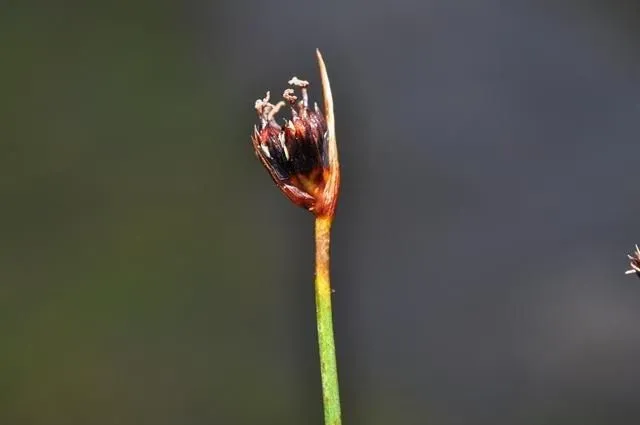
Author: Sm.
Bibliography: Fl. Brit. 1: 383 (1800)
Year: 1800
Status: accepted
Rank: species
Genus: Juncus
Vegetable: Unknown
Observations: Subarctic & Subalpine Northern Hemisphere
Chestnut rush, scientifically known as Juncus castaneus, is a noteworthy species belonging to the Juncaceae family. This perennial herbaceous plant is characterized by its resilience and adaptability to subarctic and subalpine environments in the Northern Hemisphere. First documented in 1800 by Sm. in the bibliographic reference “Fl. Brit. 1: 383,” the chestnut rush has since been recognized for its distinctive features and ecological significance.
Typically found in moist, open areas such as wetlands and marshes, Juncus castaneus thrives in regions where few other plants can endure the harsh conditions. Its hardy nature allows it to survive in the cold climates and high altitudes that define its natural habitat. The plant’s long, slender stems and rush-like appearance make it easily identifiable, and its ability to form dense tussocks helps stabilize soil, which is essential for preventing erosion in delicate subarctic and subalpine ecosystems.
In addition to its ecological role, chestnut rush is also of interest to botanists and ecologists who study plant adaptation and survival strategies in extreme environments. Its presence indicates a healthy, functioning wetland habitat, where water dynamics and soil composition are conducive to supporting a diverse range of flora and fauna.
The chestnut rush’s significance extends beyond its environmental contributions; it serves as a crucial resource for the study of plant resilience and adaptability. Understanding how Juncus castaneus and similar species thrive in challenging conditions can provide insights into the impacts of climate change on subarctic and subalpine regions, guiding conservation strategies aimed at preserving these unique ecosystems.
Overall, Juncus castaneus exemplifies the remarkable adaptability of plant life in some of the most inhospitable habitats on Earth, offering both ecological benefits and valuable opportunities for scientific research. Its continued study helps to deepen our understanding of plant ecology and the importance of wetlands in maintaining biodiversity and environmental stability.
Swe: bruntåg
Eng: chestnut rush
Nno: kastanjesiv, fjellkastanjesiv
Nob: kastanjesiv, fjellkastanjesiv
Fra: jonc marron, jonc châtain, jonc noirâtre
Sme: ruškesjiekta
Cym: brwynen gastanliw
En: Chestnut rush
Ar: أسل كستنائي
Zh: 栗花灯芯草, 粟花灯心草
Cs: Sítina kaštanová
Fi: Ruskovihvilä
Fr: Jonc marron, Jonc châtain, Jonc noirâtre
Is: Dökkasef
It: Giunco castano
Se: Ruškesjiekta
Nb: Kastanjesiv, Fjellkastanjesiv
Nn: Kastanjesiv, Fjellkastanjesiv
Sv: Bruntåg
Cy: Brwynen gastanliw
Taken Jan 1, 1900 by EOL − Encyclopedia of Life (cc-by-nc)
Taken Jan 1, 1900 by EOL − Encyclopedia of Life (cc-by-nc)
Taken Jan 1, 1900 by EOL − Encyclopedia of Life (cc-by-nc)
Taken Jan 1, 1900 by EOL − Encyclopedia of Life (cc-by-nc)
Taken Nov 20, 2009 by EOL − Jan Ševčík (public)
Taken Jan 1, 1900 by EOL − Encyclopedia of Life (cc-by-nc)
Taken Jan 1, 1900 by EOL − Encyclopedia of Life (cc-by-nc)
Taken Jan 1, 1900 by EOL − Encyclopedia of Life (cc-by-nc)
Taken Nov 20, 2009 by EOL − Jan Ševčík (public)
Taken Nov 20, 2009 by EOL − Jan Ševčík (public)
Taken Jan 1, 1900 by EOL − Encyclopedia of Life (cc-by-nc)
Family: Myrtaceae Author: (F.Muell.) K.D.Hill & L.A.S.Johnson Bibliography: Telopea 6: 402 (1995) Year: 1995 Status:…
Family: Rubiaceae Author: Pierre ex A.Froehner Bibliography: Notizbl. Bot. Gart. Berlin-Dahlem 1: 237 (1897) Year:…
Family: Sapindaceae Author: Koidz. Bibliography: J. Coll. Sci. Imp. Univ. Tokyo 32(1): 38 (1911) Year:…
Family: Asteraceae Author: A.Gray Bibliography: Pacif. Railr. Rep.: 107 (1857) Year: 1857 Status: accepted Rank:…
Family: Fabaceae Author: Medik. Bibliography: Vorles. Churpfälz. Phys.-Ökon. Ges. 2: 398 (1787) Year: 1787 Status:…
Family: Aspleniaceae Author: (Cav.) Alston Bibliography: Bull. Misc. Inform. Kew 1932: 309 (1932) Year: 1932…